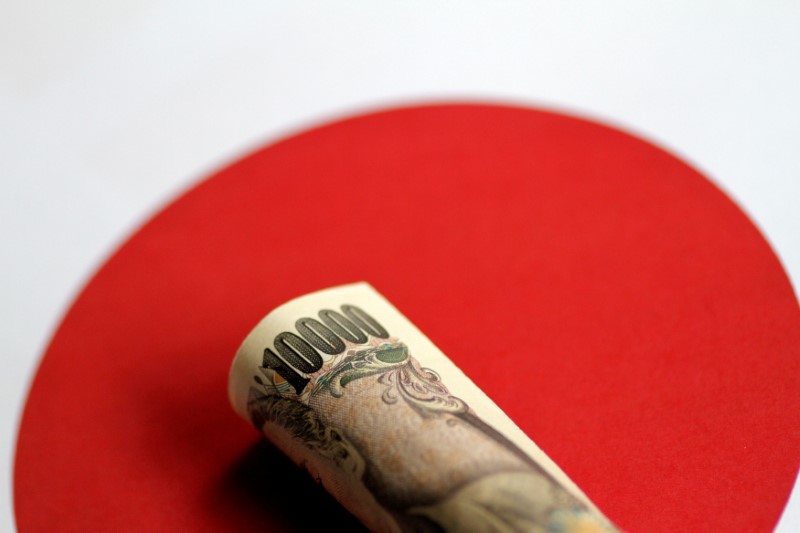Forex
Asia FX muted before more economic cues; Yen firms with BOJ on tap


© Reuters.
Investing.com– Most Asian currencies moved little on Monday, while the dollar ticked lower before a slew of key economic cues due this week, with the Japanese yen firming from near two-month lows in anticipation of a Bank of Japan meeting.
Concerns over China also kept sentiment towards Asian markets largely muted, after the People’s Bank of China held its benchmark at record lows earlier in the session. The central bank has limited headroom to loosen policy further, as it struggles to strike a balance between supporting an economic recovery and preventing more yuan weakness.
The moved little in onshore trade, while the crossed the 7.2 level to the dollar.
The dollar was hit with some profit-taking after a strong start to the year, with the outlook for the greenback looking robust as traders began pricing in a greater possibility of higher-for-longer U.S. interest rates. This notion weighed on most Asian currencies over the past few weeks.
Japanese yen rises, BOJ set to maintain ultra-dovish policy
The was among the worst-hit by expectations of high U.S. rates, but saw some strength on Monday, rising 0.2% from its weakest levels since late-November.
Focus was chiefly on the conclusion of a on Tuesday, where the central bank is widely expected to maintain negative interest rates and its yield curve control mechanisms.
Analysts expect , especially amid increased uncertainty over the Japanese economy after a devastating earthquake at the beginning of the year.
Softening inflation and sluggish wage growth is also expected to put little pressure on the BOJ to consider tightening policy.
Beyond the BOJ meeting, focus this week is also on for January, which is expected to reflect any inflationary impacts from the new year earthquake.
Broader Asian currencies were muted as they nursed losses from a weak start to the year. The steadied after sinking to a two-month low, while the lost 0.2% and remained in sight of a near three-month low. South Korean for the fourth quarter is also due this Thursday.
The steadied near two-month lows ahead of key later this week.
The moved little, with local markets closed for a special holiday to mark the inauguration of a controversial temple in North India. But traders remained on edge over any potential communal violence rising from the inauguration, given that the topic is a major point of contention for Hindu-Muslim relations.
Dollar edges lower before GDP, inflation data
The and both fell 0.1% in Asian trade, retreating further from recent one-month highs amid profit-taking.
The showed that markets were now pricing in a greater chance for no changes to U.S. interest rates in March- a drastic reversal from earlier expectations for a cut. Such a scenario bodes well for the dollar.
Focus this week is on more cues from the world’s largest economy, particularly on which is expected to show cooling growth.
More cues on inflation are also due this week with data- which is the Fed’s preferred inflation gauge- due this Friday. Any signs of sticky inflation give the bank more impetus to keep rates higher for longer.
The Fed is widely expected to when it meets next week.
Upgrade your investing with our groundbreaking, AI-powered InvestingPro+ stock picks. Use coupon INVSPRO2024 to avail a limited time discount on our Pro and Pro+ subscription plans. Click here to know more, and don’t forget to use the discount code when checking out!

 Forex3 years ago
Forex3 years agoForex Today: the dollar is gaining strength amid gloomy sentiment at the start of the Fed’s week

 Forex3 years ago
Forex3 years agoUnbiased review of Pocket Option broker

 Forex3 years ago
Forex3 years agoDollar to pound sterling exchange rate today: Pound plummeted to its lowest since 1985

 Forex3 years ago
Forex3 years agoHow is the Australian dollar doing today?

 Cryptocurrency3 years ago
Cryptocurrency3 years agoWhat happened in the crypto market – current events today

 World3 years ago
World3 years agoWhy are modern video games an art form?

 Commodities3 years ago
Commodities3 years agoCopper continues to fall in price on expectations of lower demand in China

 Economy3 years ago
Economy3 years agoCrude oil tankers double in price due to EU anti-Russian sanctions


























